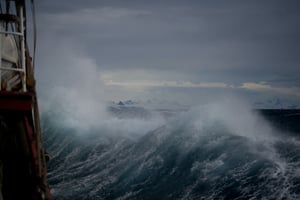Ground conditions When delivering an outdoor event or festival, deterioration of ground conditions...
Weather-related risks & weather resilience at events #1
Site selection and seasonality considerations
Planning an outdoor event can be an exciting and daunting task. There are many factors to consider, from the theme and entertainment, to the location and timing. Adverse weather and the possibility of weather related cancellation or postponement has the potential to disrupt your event, so you should consider this when selecting your site. Some locations, for instance on the coast, may be susceptible to high winds. Fireworks event insurance is key in these locations for fireworks events that cannot take place in high winds. Locations on flood plains or near rivers and lakes may be vulnerable to water logging during heavy rain. Festival cancellation insurance is often important for festivals for these reasons. Campsites underwater will mean unhappy attendees! Understanding these risk factors in advance will help you to plan for every eventuality.
The season in which you hold your event can also have a significant impact on its weather resilience. Whilst most outdoor events happen during the summer, increasingly event organisers are holding events in the spring and autumn - particularly sporting or exercise events, and also in the winter - for example Christmas markets or illuminations. Recognising the higher chance of adverse weather outside of the summer months can help you plan to make your event more resilient. If you are using temporary structures during a winter event, your supplier may need to consider how to maximise their robustness in the case of high winds or snow.
Temporary Structures
Managing weather-related risks is a critical aspect of event planning, especially when dealing with adverse weather conditions. Temporary structures offer a practical solution for managing weather risks and ensuring resilience during events. In this section, we'll discuss key considerations when using temporary structures to manage weather-related risks, including wind loading, manufacturers, RAMS, completion certificates, guidance, and regulations.
Wind Loading
Wind loading is an important factor to consider when using temporary structures. High winds can cause severe damage to temporary structures, leading to injury or loss of life. Therefore, it is essential to ensure that the temporary structure is designed and installed to withstand high winds. It is vital to work with suppliers who have experience in designing and installing temporary structures that can withstand adverse weather conditions. Your supplier should make clear to you the maximum wind speed at which your structures are safe for normal use. You should incorporate this information into your Event Management Plan and Risk Assessment - outlining the action you will take if these wind speeds are exceeded. Event public liability insurance will be needed incase of injury to the public, and event cancellation cover will protect against the entire event being cancelled due to high winds.
Manufacturers
A vast array of temporary structures are available on the market. In most cases, your supplier is not the manufacturer - rather they purchase the equipment from a manufacturer and install it for you for the required period. It’s important to understand that not all structures are manufactured to exactly the same criteria - although there are some regulations and standards that are universally required. For events where adverse weather is an important consideration, it’s important to understand the type of structures you are hiring - and the standards to which they have been manufactured. Temporary structure suppliers can guide you on which are most appropriate for the type, location, and seasonality of your event.
RAMS
Risk assessment and method statement (RAMS) are vital documents when using temporary structures. They provide an outline of the risks involved in using the temporary structure and the measures taken to mitigate those risks. RAMS should be carried out by a qualified professional and should be reviewed regularly to ensure that they remain up to date. These documents would typically be provided by your temporary structure supplier before they arrive at your event site, but you must also record in your own risk assessment that the hazards around temporary structures have been considered.
Completion Certificates
Completion certificates are vital documents that show that the temporary structure has been designed, installed, and tested to meet the relevant standards and regulations. Completion certificates should be obtained from the installation company and should be kept on file for future reference.
Guidance and Regulations
There are several regulations and guidance documents that must be followed when using temporary structures. These regulations and guidance documents provide information on the design, installation, and use of temporary structures. Examples of regulations and guidance documents include
- The HSE Website, for guidance on complying with the Health and Safety at Work etc Act 1974.
- The Purple Guide. This service is provided by the Events Industry Forum in consultation with the HSE. It is particularly relevant to large outdoor events.
https://www.thepurpleguide.co.uk/ - The IStructE Guide to Temporary Structures. This guide focuses on standards for the design, manufacture, and construction of temporary structures.
Hear about first hand experiences from event organisers, relating to organisation, planning, insurance for events in the UK, and mishaps along the way at Freddie's podcast, WHEN SH*T GOES WRONG AT EVENTS.


